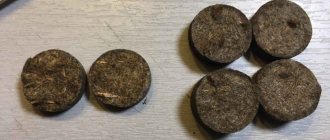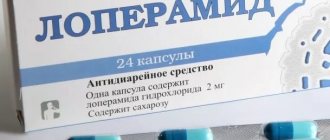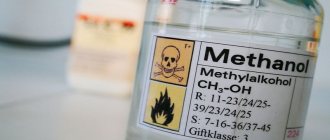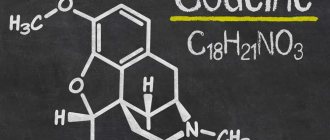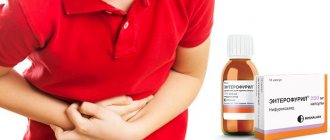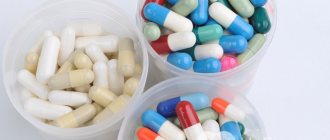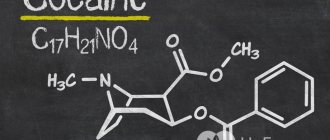When the body is exposed to toxic substances, a person may feel unwell or develop symptoms of poisoning, which do not always lead to death, but death in such cases is not excluded.
Poisoning can be treated in different ways, and one of them is the use of an antidote - a substance that binds and removes poison from the body. One of these drugs is Unithiol, an antidote used for various poisonings. Let's look at how it works and how to use it.
Mechanism of action of "Unitiol"
The drug "Unitiol" was developed in the Soviet Union as an antidote that helps against the effects of certain toxic chemicals. Poisoning can be treated if:
- prevent the entry of a toxic substance into the body;
- speed up its elimination;
- tie it up and remove it from the body before the consequences develop.
You can prevent the substance from entering the body by using prophylactic methods, or by removing the person from the area of infection. Blood thinning and forced diuresis help speed up its elimination.
This means that a large amount of fluid is injected intravenously and then removed by stimulating kidney function, while the toxic substance is excreted in the urine.
special instructions
During the treatment period, the prescription of drugs that reduce the acidity of urine is required.
In case of poisoning, gastric lavage is performed through a nasogastric tube and hemodialysis. For hangover syndrome, a solution in glucose is administered, as well as sodium chloride and diuretics to force diuresis and eliminate convulsive syndrome due to cerebral edema. Absorbents are used - activated carbon tablets.
Do not use simultaneously with iron salts.
Contraindicated for pregnant and nursing mothers.
The drug is contraindicated for pregnant and nursing mothers.
In childhood
Contraindicated under 18 years of age.
In old age
Contraindicated in elderly people with hypertension, renal or liver failure.
Contraindicated in hepatic coma, severe liver dysfunction, critical increase in urea and liver transaminases in the blood.
Treatment is carried out under the control of creatinine and urea levels in the blood. In case of acute renal failure that occurs after poisoning with lead and/or other nephrotoxins, hemodialysis is performed until the level of nitrogen metabolic products is normalized.
In cases of renal dysfunction, treatment is carried out under the control of creatinine and urea levels in the blood.
Names of tablets for alcohol poisoning symptomatic group
Zorex
It has high detoxification, antioxidant and hepatoprotective properties. The main active substances that are included in the structure of Zorex are unithiol and calcium pantothenate.
As a result of the interaction of unithiol and the breakdown products of ethanol (other poisons), non-toxic complexes are formed, which the body gets rid of in the urine. The presence of calcium pantothenate increases the effectiveness of the detoxifying action of Zorex.
How does medicine work in the body?
To reduce the possible threat from intoxication, you will need:
- block the distant entry of toxins into the victim’s body;
- bind toxic substances to prevent the situation from becoming more complicated;
- speed up the process of removing poisons that have already entered the blood.
The easiest way to deal with cases of mild poisoning that occurs once. If the situation was recorded in an industrial area, then it is enough to take the victim away from the site of infection. The method of blood thinning together with forced diuresis will also be effective.
The principle of the latter involves the administration of large amounts of fluid intravenously. And for reverse withdrawal, kidney stimulation is carried out. All toxins that were previously in the body will be eliminated along with urine.
But all of the above is good in a hospital setting after the patient has already received first aid. And before his hospitalization at the nearest medical facility, the patient will have to receive a set of operational measures aimed at restoring his well-being. The main component of emergency therapy is taking an antidote.
The mechanism of action of Unitiol, which has already saved more than one life, is based on the special composition of the product. There are a couple of sulfhydryl groups present here. Its predecessor, which is the English-made BAL drug, had only one identical group. This was only enough to fight lewisite.
But the use of a duet of sulfhydryl groups made it possible to expand the capabilities of the drug, making the drug one of the best for binding heavy metals such as:
- bismuth,
- mercury,
- zinc,
- chromium,
- copper,
- arsenic.
You can find all this not only in its pure form at some specialized production. Often such components are included in:
- medicines,
- various equipment,
- paint and varnish materials,
- exhaust gases.
Unithiol is actively used for alcoholism in its chronic form.
It is especially important to start using it on time if the patient has been exposed to chronic alcohol poisoning from low-quality alcoholic drinks and surrogates
As soon as the number of sulfhydryl groups in a person’s blood decreases, the patient begins to experience pain. This is typical not only for those who belong to the category of chronic alcoholics, but also for those who suffer from:
- diabetes mellitus,
- polyneuropathy,
- amyloidosis.
As soon as the medicine enters the blood, its components immediately begin to bind heavy metals. As a result, sulfhydryl groups are released, which relieves pain.
In addition to alleviating the current condition, the medication promotes the rapid restoration of enzymes that have been damaged due to the negative effects of heavy metals on the tissues and organs of the victim. Due to this, Unithiol is considered one of the most effective antidotes in its group, which promotes the rapid removal of heavy metals from the body.
Drug interactions
Simultaneous use with drugs containing heavy metals and alkalis is not recommended, as Unithiol rapidly decomposes.
Adsorbents and symptomatic medications help relieve the symptoms of ethyl poisoning. Let's look at them in more detail.
Adsorbent preparations should be taken before drinking alcohol, since for the sorbent to work effectively it is necessary to wait time (at least an hour).
In this regard, this category of drugs is used for preventive purposes rather than for therapeutic purposes.
Medicines administered intravenously provide faster and more effective relief from alcohol intoxication than tablets.
Let's look at the most common injection solutions.
It is not recommended to combine with drugs that contain alkalis and heavy metals, which contributes to the rapid decomposition of Unithiol.
Overdose
| This section is missing references to information sources. Information must be verifiable, otherwise it may be questioned and deleted. You may edit this article to include links to authoritative sources. This mark was set on May 7, 2020 . |
Symptoms:
Shortness of breath, hyperkinesis, lethargy, lethargy, stupor, short-term convulsions (occur when the recommended therapeutic dose is exceeded by more than 10 times).
Treatment
Gastric lavage, taking activated charcoal, laxatives, symptomatic therapy.
Application of "Unitiol"
The drug is used for poisoning with heavy metals (except for lead), for diseases causing polyneuropathy (diabetes mellitus, chronic alcoholism, Wilson-Konovalov disease), poisoning with cardiac glycosides.
Let's look at how Unithiol is used as an antidote for poisoning.
"Unithiol" for mercury poisoning
It is used in the treatment of poisoning with salts of chromium, mercury, arsenic, bismuth and other heavy metals. At the same time, the drug is less effective in removing lead salts from the body.
It is used for poisoning with cardiac glycosides, as well as as part of complex therapy for chronic alcoholism.
The drug is quite effective in the treatment of chronic alcoholism.
Intended for subcutaneous or intramuscular administration.
For intoxication with arsenic or mercury compounds - 250-500 mg (5-10 ml of the drug), at the rate of 0.05 g/10 kg, on the first day 3-4 times, on the second day 2-3 times, on subsequent days 1-2 times .
In case of digitalis intoxication, in the first 2 days, 250-500 mg (5-10 ml of the drug) are administered 3-4 times a day, then 1-2 times a day until the cardiotoxic effect ceases. For hepatocerebral dystrophy - intramuscularly 250-500 mg (5-10 ml of the drug) daily or every other day, course of therapy - 25-30 injections; if necessary, repeat after 3-4 months.
For chronic alcoholism, 150-250 mg (3-5 ml of the drug) is prescribed 2-3 times a week. To relieve delirium, take a single dose of 200-250 mg (4-5 ml of the drug).
For diabetic polyneuropathy - 250 mg (5 ml of the drug) intramuscularly, course of therapy - 10 injections.
Composition and release form
Available in the form of solutions for parenteral administration (intramuscular, intravenous injections) in ampoules of 5 ml (50 mg of active substance per 1 ml).
The drug is available in the form of solutions for parenteral administration.
The active ingredient is sodium dimercaptopropanesulfonate monohydrate.
Excipients: Trilon B, sulfuric acid, water.
Unithiol in pharmacies in Moscow and other populated areas is sold in cardboard packages, in which the manufacturer has included a description of the use of the drug and cells containing ampoules with the solution. The active component is a substance called unithiol. The auxiliary composition is represented by the disodium salt of ethylenediaminetetraacetic acid, distilled water and sulfuric acid, the pH of which does not exceed 4.5.
The drug Unithiol price from 498 RUR, reviews and availability
favorites compare Unithiol for injection 5% 5ml solution No. 10 The drug Unithiol solution belongs to the Antidotes group and is included in the category Enterosorbents and antidotes – Treatment of gastrointestinal and liver diseases – Medicines and dietary supplements. You can always buy Unithiol inexpensively at a very competitive price at ElixirPharm. The drug contains sodium dimercaptopropanesulfonate.... Out of stock498 RUR.Your advantageous offer
Rinostop nasal 0.1% 15ml spray RUB 97.50
Normobakt L 3g No. 10,595 rub.
Bystrumgel 2.5% 50g gel 357 rub.
Oscillococcinum 1g granules No. 6 485 rub.
Claritin 10 mg tablets No. 10 RUR 236
The drug is used primarily in hospital practice. Doctors speak of Unithiol as an effective means of evacuating toxins, especially in cases of alcohol poisoning.
Nosological classification (ICD-10)
- F10.2 Alcohol dependence syndrome
- F10.4 Withdrawal state with delirium
- F10.5 Alcoholic psychosis
- K70 Alcoholic liver disease
- T46.0 Poisoning with cardiac glycosides and similar drugs
- T56.1 Toxic effects of mercury and its compounds
- T56.2 Toxic effects of chromium and its compounds
- T56.8 Toxic effects of other metals
- T57.0 Toxic effects of arsenic and its compounds
We invite you to familiarize yourself with Kristalnik helps in the fight against alcoholism || Crystalline for alcoholism
Pharmacodynamics
The active sulfhydryl groups of unithiol, interacting with thiol poisons (arsenic compounds, heavy metal salts) and forming non-toxic water-soluble compounds with them, restore the functions of the body's enzyme systems, disturbed by the poison.
Increases the removal of certain cations (especially copper and zinc) from metal-containing cell enzymes. Pharmacodynamics
Unithiol has a detoxifying effect. Eliminates the deficiency of sulfhydryl groups. Its mode of action is similar to complexones. Sulfhydryl groups react with thiol poisons in tissues and blood, forming harmless complexes that are evacuated in the urine. Blocking poisons restores the functioning of enzyme systems in cells affected by toxic substances. It is used as an antidote for poisoning with heavy metals, arsenic and their compounds.
In persons with secondary amyloidosis and polyneuropathy of diabetic origin, it helps relieve pain, improve the nervous system, and regulates capillary permeability.
Pharmacokinetics
After injection, the drug molecules actively penetrate into the blood. The highest concentration in the blood is recorded half an hour after intramuscular administration. The half-life reaches 2 hours. It is excreted in the urine, mainly in the form of products of incomplete oxidation.


